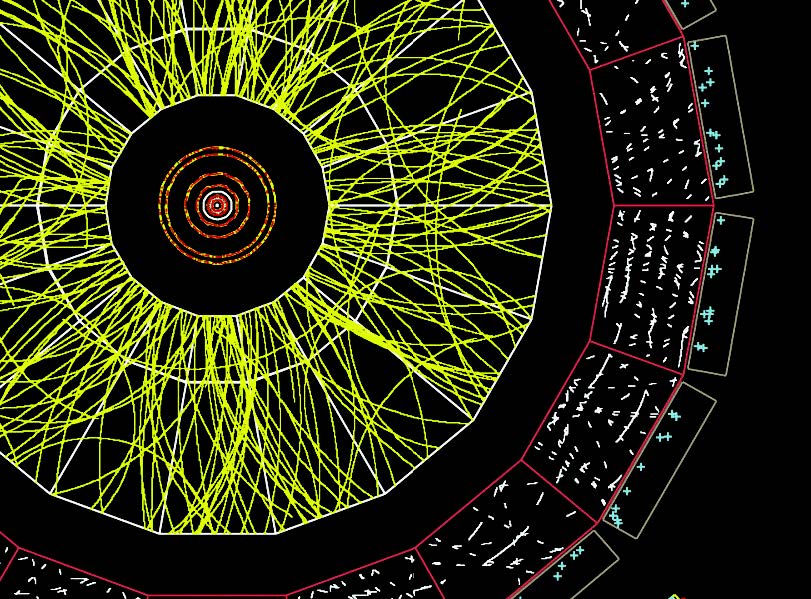The ALICE experiment, short for A Large Ion Collider Experiment, is a massive effort to study the birth of matter involving a collaboration of more than 1,000 physicists, engineers, and technicians from 30 countries. The Ohio Supercomputer Center serves as a key resource for hosting data and analysis codes in North America.
ALICE researchers are working to recreate the “Big Bang” on a small scale by generating heavy ion collisions within the Large Hadron Collider at CERN, the European Laboratory for Nuclear Research in Switzerland. They will examine a rare matter called quark-gluon plasma (QGP), which hasn’t existed in nature since 20 - 30 microseconds after the universe formed. Because QGP exists for only about one billionth of a trillionth of a second, it cannot be studied directly.
ALICE physicists will accelerate two lead nuclei to nearly the speed of light and collide them at unprecedented temperatures and densities. The collaboration’s challenge is to visualize particles expelled from the collisions, distinguishing the formation of QGP from the other more common phenomena. Intricate detection instruments will measure the position of a particle to a fraction of a millimeter, plot its path among millions of other particles, and record approximately 1.25 gigabytes of data per second - or as much as three DVDs per minute - on the momentum, charge, and velocity of particles.
This data will be distributed through high-speed connections for processing by the “Grid,” a global network of computer clusters at scientific institutions. OSC will provide 300,000 CPU hours through the end of 2007 and one million hours in 2008. Researchers currently are responding to final data challenges prior to the first experiments, expected in mid-2008. ALICE already has yielded many valuable second-order benefits in areas such as distributed computing, mass data storage and access, software development, and instrument design.
--
OSC Partners:
• The Ohio State University
• University of Houston
• Lawrence Berkeley National Laboratory
• Lawrence Livermore National Laboratory
Research Title:
Developing Extensions to Grid Computing for ALICE at the LHC
Funding Source:
National Science Foundation
Principal Investigator:
Thomas J. Humanic, Ph.D., The Ohio State University
For more information:
